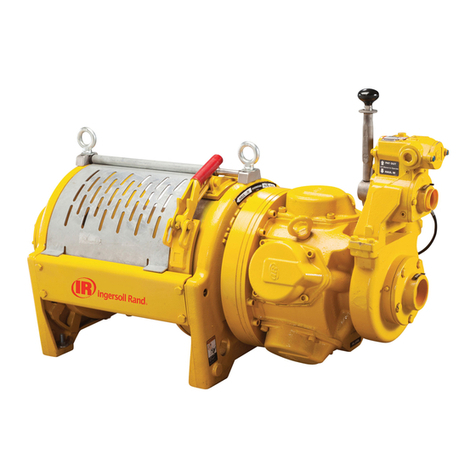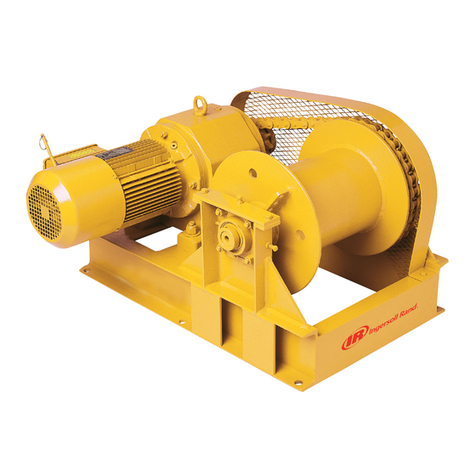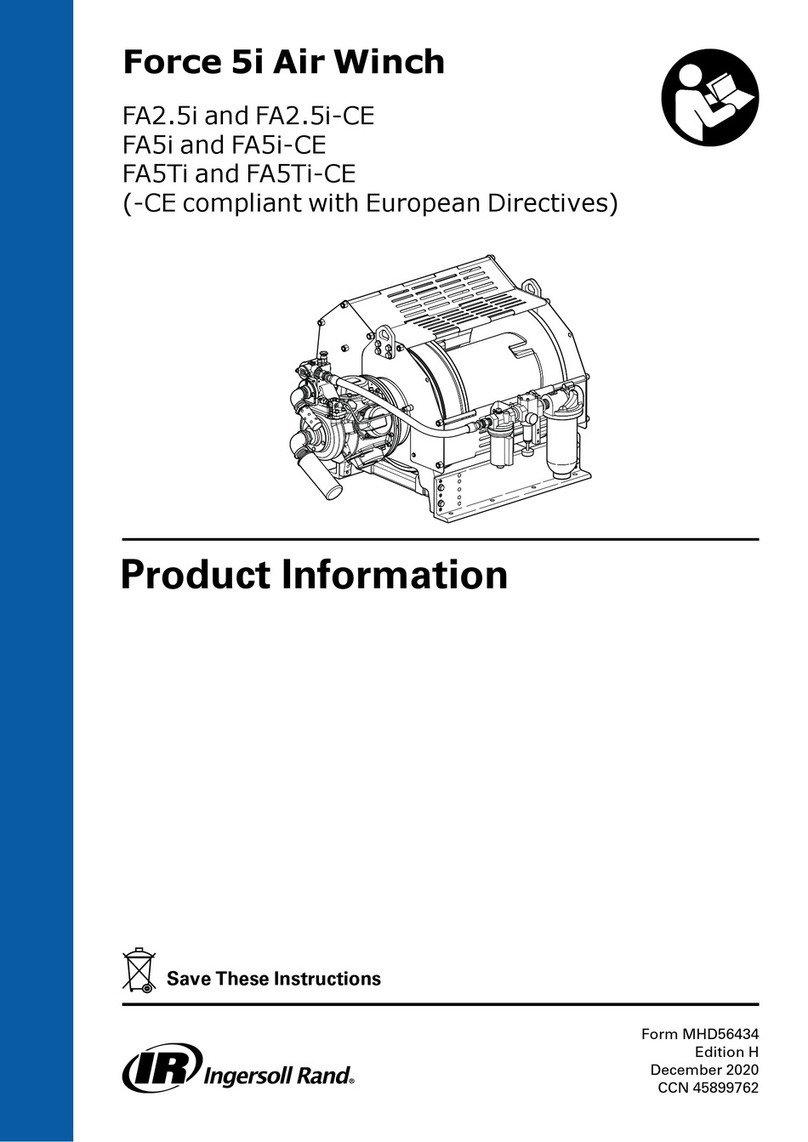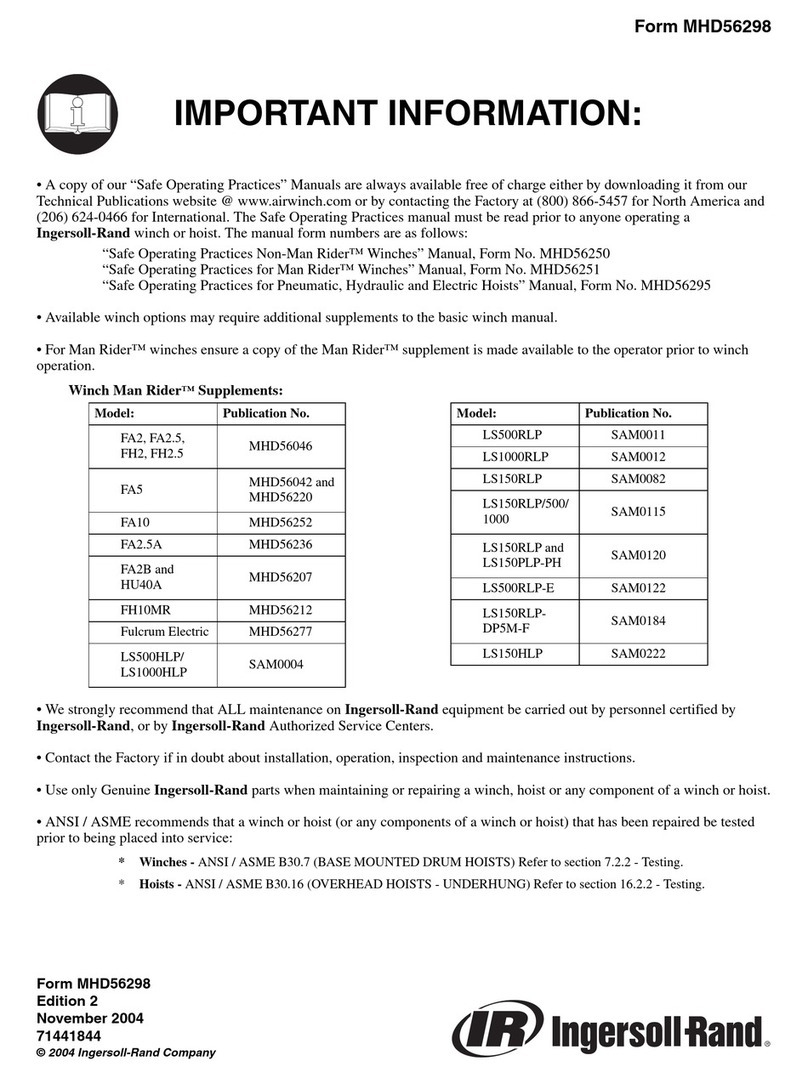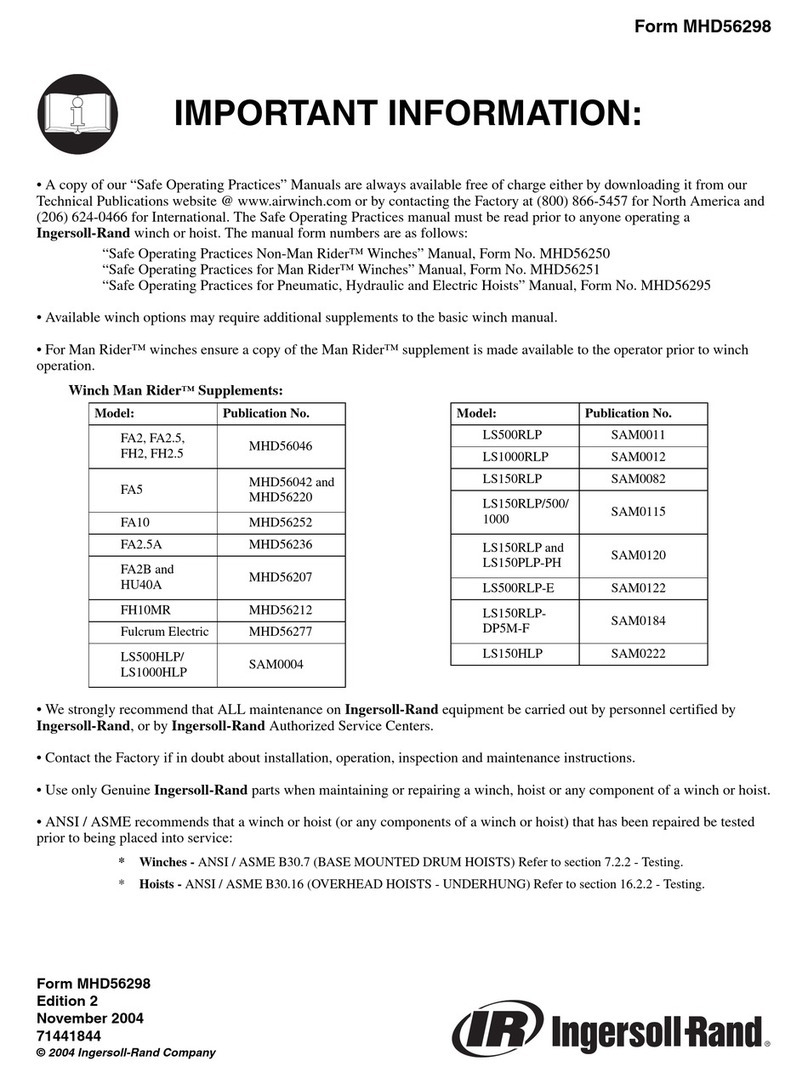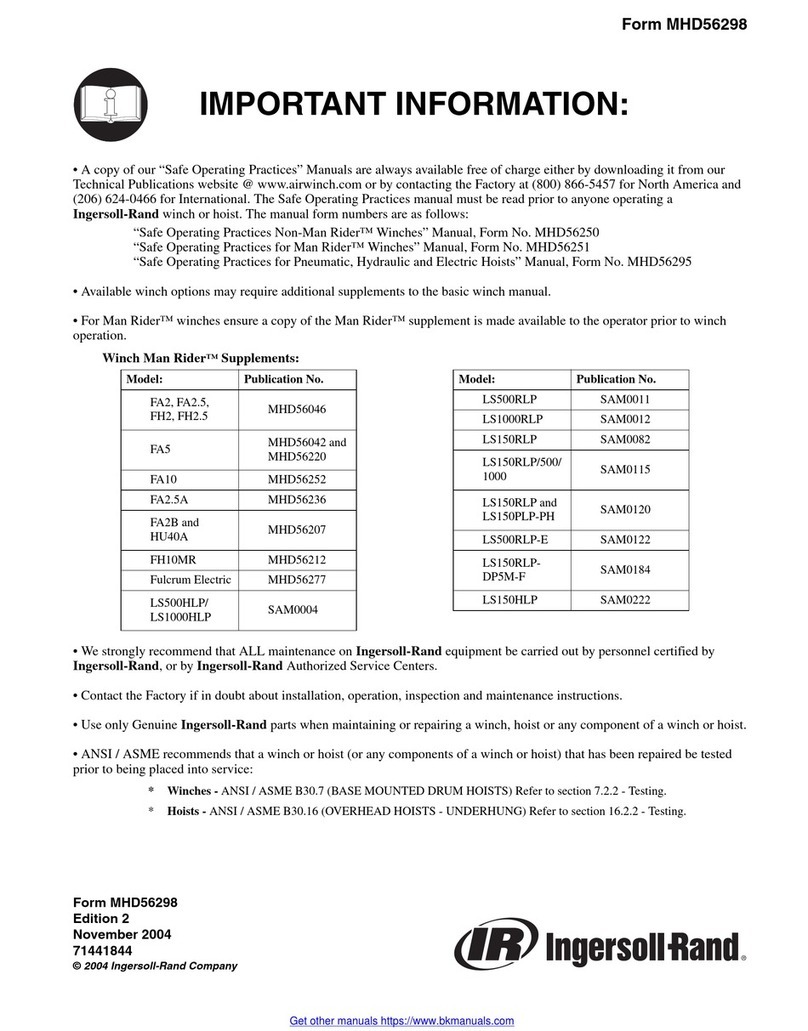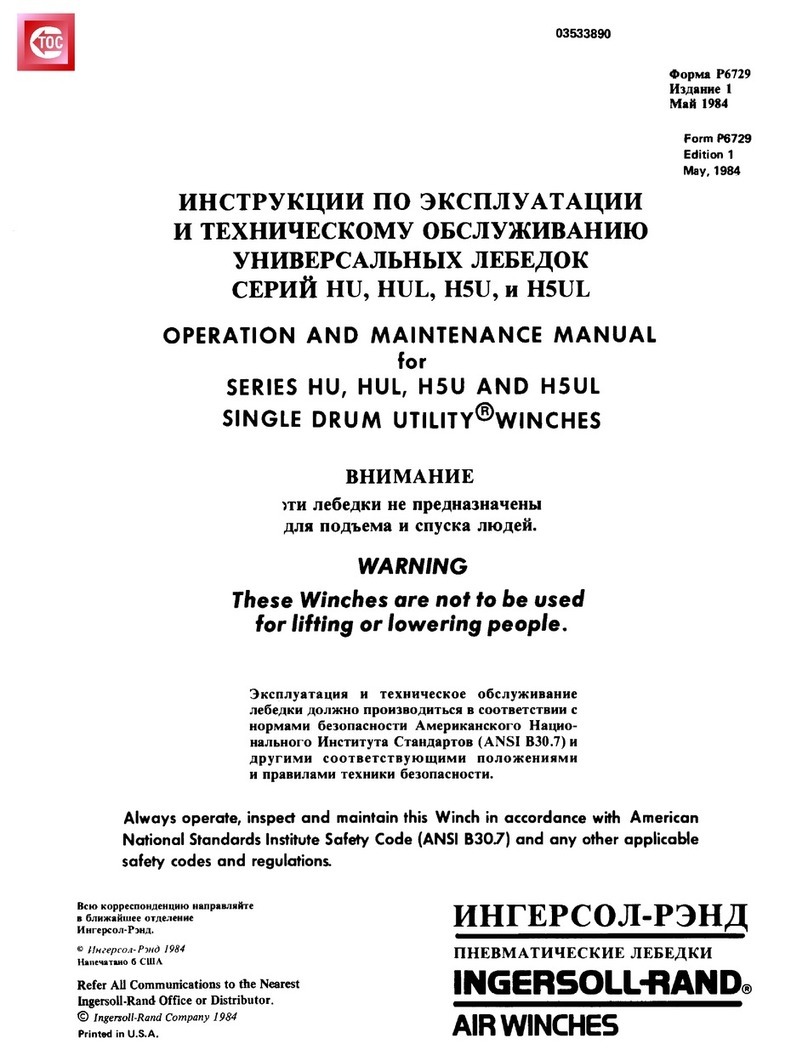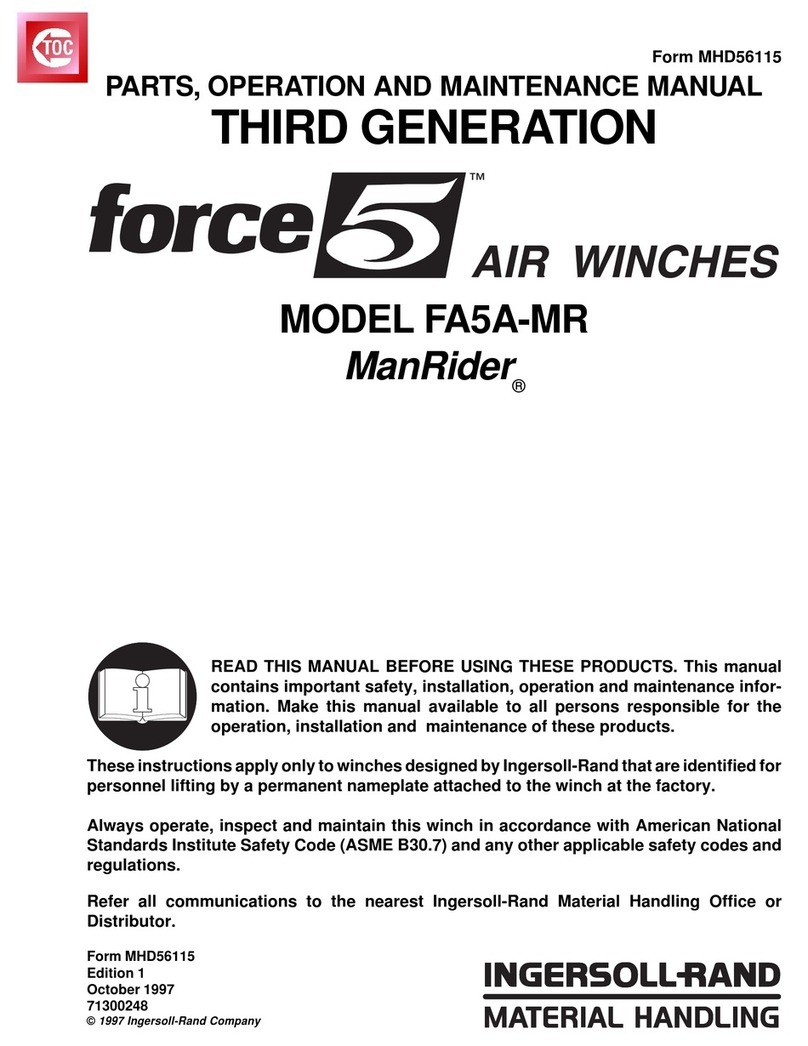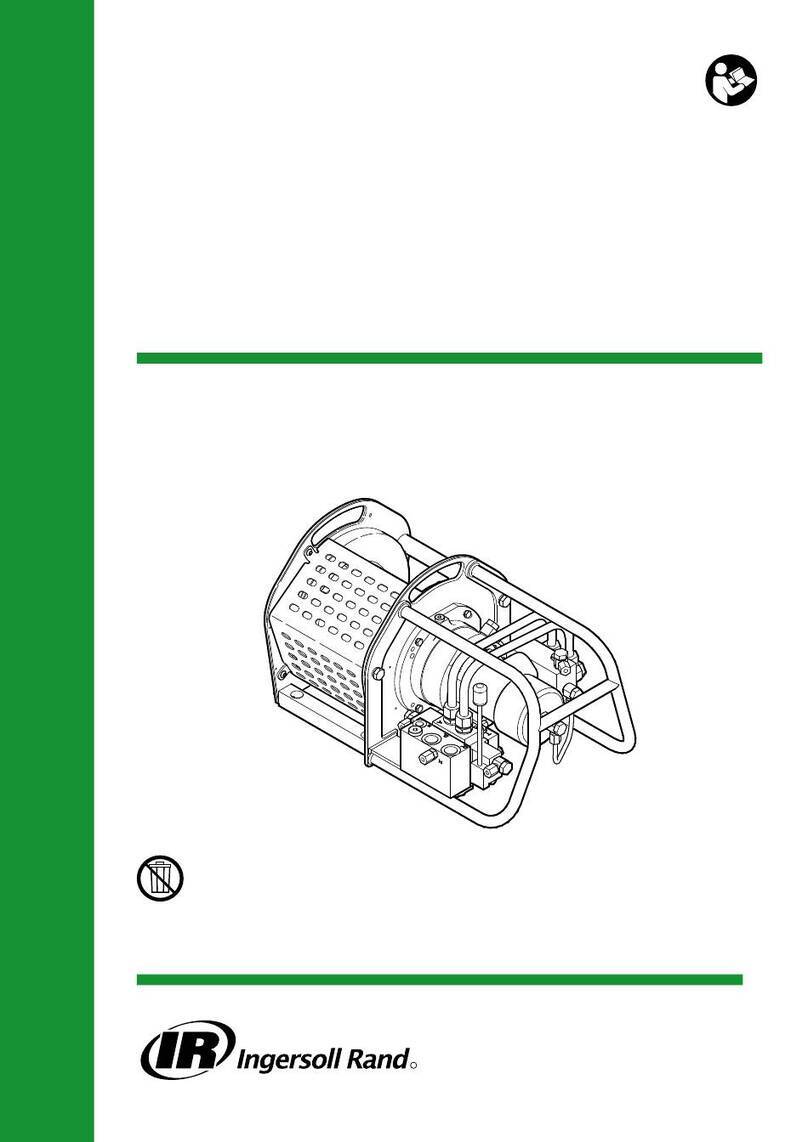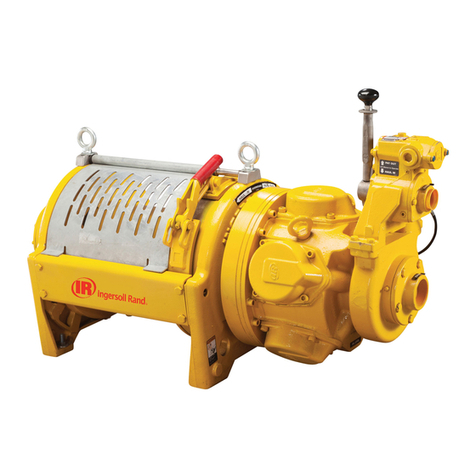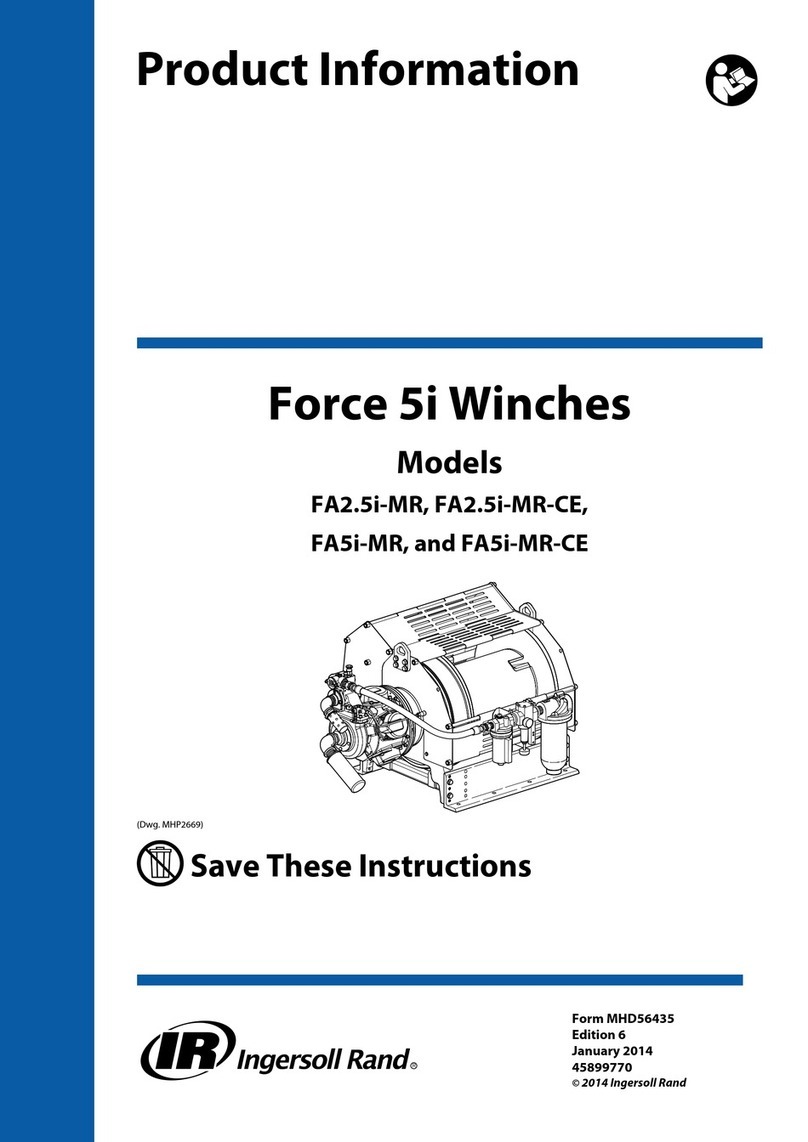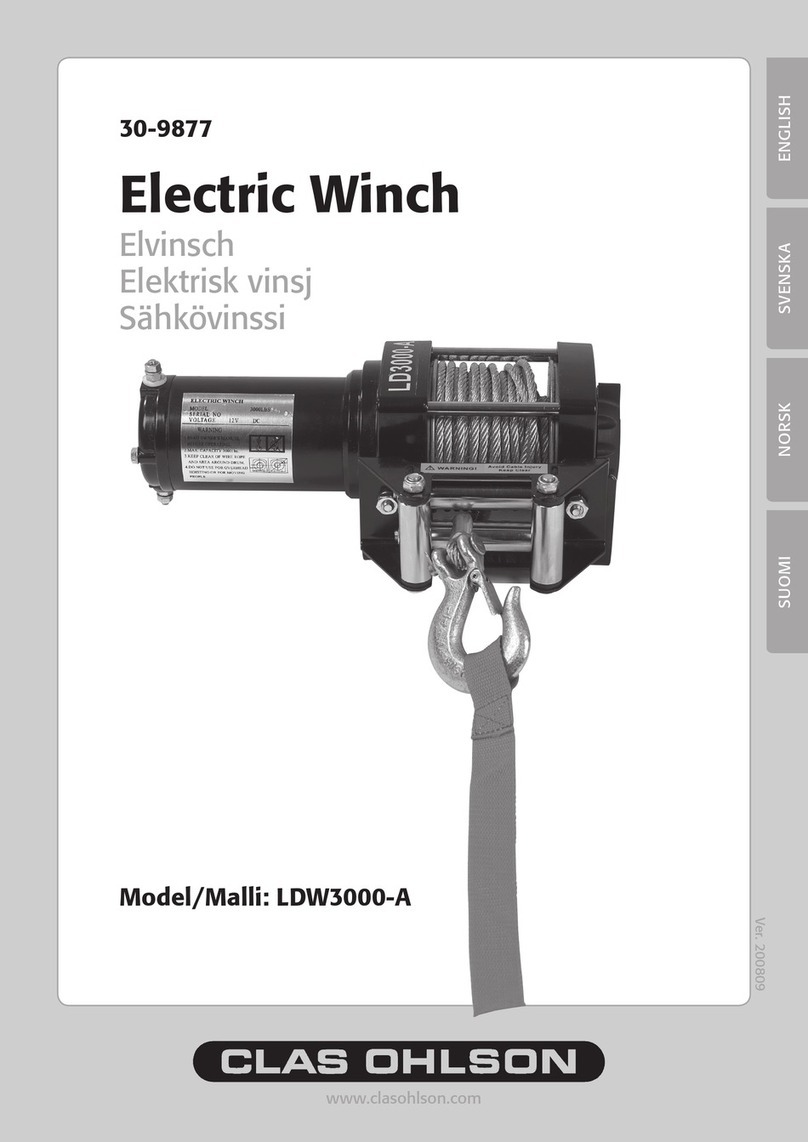
Setting with scale:
Actuate auxiliary valve to TENSIONING position. Winch should operate, causing load
line to become taut. To increase tension, rotate regulator knob clockwise until scale
indicates desired tension. Note pressure indicated on gauge for future setting
reference.
nDisassembly
nGeneral Disassembly Instructions
The following instructions provide necessary information to disassemble, inspect,
repair, and assemble product. Parts drawings are provided in Product Parts
Information Manual.
If a product is being completely disassembled for any reason, follow the order of
topics as they are presented. It is recommended that all maintenance work on
product be performed in a clean dust-free work area.
In the process of disassembling product, observe the following:
1. Never disassemble product any further than is necessary to accomplish needed
repair. A good part can be damaged during the course of disassembly.
2. Never use excessive force when removing parts. Tapping gently around
perimeter of a cover or housing with a soft hammer, for example, is sufficient to
break the seal.
3. Do not heat a part with a flame to free it for removal, unless part being heated
is already worn or damaged beyond repair and no additional damage will occur
to other parts.
In general, products are designed to permit easy disassembly and assembly. The
use of heat or excessive force should not be required.
4. Keep work area as clean as practical, to prevent dirt and other foreign matter
from getting into bearings or other moving parts.
5. All seals, gaskets and ‘O’ rings should be discarded once they have been
removed. New seals and ‘O’ rings should be used when assembling product.
6. When grasping a part in a vise, always use leather-covered or copper-covered
vise jaws to protect the surface of part and help prevent distortion. This is
particularly true of threaded members, machined surfaces and housings.
7. Donotremoveanypart whichisapressfit inoron asubassembly unlessremoval
of that part is necessary for repairs or replacement.
8. When removing ball bearings from shafts, it is best to use a bearing puller. When
removing bearings from housings, drive out bearing with a sleeve slightly
smaller than outside diameter of bearing. The end of sleeve or pipe which
contacts bearing must be square. Protect bearings from dirt by keeping them
wrapped in clean cloths.
nWinch Disassembly
Refer to Dwgs. MHP2689 or MHP2670, MHP2693 and MHP2624.
1. Remove wire rope from drum.
2. Operate winch to position reduction gear drain plug at its lowest position.
3. Relieve pressure in air lines by operating winch control several times after air
supply has been turned off.
WARNING
•Shut off, bleed down and disconnect air supply line before performing any
disassembly procedures.
4. Tag and disconnect hoses to motor and control valve.
5. Remove winch from its mounting and move to a suitable work area before
beginning disassembly.
6. Remove lower case drain plug (225) on K5B motor housing (217) and allow oil
to drain into a suitable container. Loosen fill cap (210) to vent motor housing.
7. Drain oil from reduction gear assembly by removing one plug (48) when
positioned at its lowest point, and one plug (48) from its highest point to vent.
Refer to Dwg. MHP0140 in Product Information Manual. If winch is equipped
withadrum bandbrake,elevate winchoutboardend (opposite frommotorend)
to prevent draining oil from contaminating brake band lining.
8. For winches with a disc brake, remove pipe plug (31) in brake housing (17) to
drain brake oil.
9. Removedrumbandbrake,winchguardandanyother externallymountedwinch
attachments.
10. Drum guard disassembly (refer to Dwgs. MHP2676 and MHP2689):
a. Remove panels (805) and (807), one section at a time, by removing locknuts
(804) and crossbars (806).
b. Remove capscrews (90) and washers (91) securing lifting lugs (83) to
uprights.
c. Remove capscrews (809) and washers (96) securing frames (802) and (801)
to uprights (42) and (84).
WARNING
• The air motor weighs approximately 260 lb (118 kg). Adequately support
air motor before removing motor mounting capscrews.
11. Remove capscrews (4) and lockwashers (3) securing motor assembly to motor
adapter(6).Using a hoisttosupport motor,pullmotor straight awayfromwinch.
Reference the applicable ‘Motor Disassembly’ section on page 8 if motor
disassembly is required.
Instructions 12 through 18 apply only to winches with a disc brake.
12. Alternately and evenly loosen eight capscrews (93) until brake spring
compression is relaxed. Remove capscrews and motor adapter (6).
13. Remove brake housing (17). If brake housing sticks, tap it with a soft faced
hammer until parts separate.
14. Note position of all brake parts for reassembly.
15. Remove five friction plates (19) and six drive plates (18).
16. Remove springs (9) from brake piston (10).
17. Remove brake piston (10) from brake housing (17). Tap lightly with a plastic
mallet to separate parts, if necessary.
18. Remove seals (11) and (12) from brake piston (10).
19. Loosen capscrew in collar (13) and slide collar from shaft (7) with gear (21) from
drive shaft (35).
20. Remove retainer ring (36) from bore of drum shaft (41).
21. Pull shaft and bearing assembly from drum shaft (41).
22. Support drum (80) and remove capscrews (39) from drum shaft (41). Pry drum
shaft (41) from inboard upright (42).
23. Removecapscrews (85)andlockwashers (98)that securesiderails(82)toinboard
upright (42). Drive out dowel pins (86).
24. Remove inboard upright (42).
25. Remove capscrews (97), lockwashers (96) and end cover (95) from outboard
upright (84).
26. Remove capscrews (94) and bearing retainer (92) from drum (80).
27. Remove drum and reduction gear assembly.
28. Removeremainingcapscrews (85) andlockwashers(86) that attachsiderails(82)
to outboard upright (84). Drive out dowel pins (86).
29. Remove bearing (87) from outboard upright (84).
30. Remove capscrews (45) and lockwashers (46) securing gear carrier (47) to drum
(80).
31. Install two 3/4 in. - 10 NC x 3 in. long capscrews into threaded holes in outer bolt
pattern ring of gear carrier (47). Use these capscrews to break seal. Remove
reduction gear assembly from drum (80).
32. Remove dowel pins (40) or (86) from gear carrier (47).
To disassemble reduction gear refer to ‘Reduction Gear Disassembly’ on page 8.
nManual or Automatic Band Brake Disassembly
Refer to Dwg. MHP2694.
1. Automatic Brake:
a. Disconnect and remove hose, fittings and dump valve (112) from cylinder
(110).
b. Remove cotter pin (102) and pin (101) from link stud (103) and band brake
(128).
c. Remove cotter pin (102) and pin (106). Separate clevis (107) from brake lever
(105).
d. Remove cotter pin (102) and pin (134). Remove cylinder (110) from bracket
(118).
2. Manual Brake:
a. Removecotter pin(102) andpin (101)fromhandle(104)thenremovehandle
(104) from band brake (128).
3. Remove capscrews (119), lockwashers (117) and stop plate (126).
4. Use a hoist to raise winch approximately 6 inches (15 cm). Separate band brake
(128)halvesandrotate band brakeassemblyslowlyuntil it can beremovedfrom
drum (80).
5. Remove cotter pins (102) and pins (121) so brake band halves (128) can be
removed from arm (124). Lower winch when band brake assembly has been
removed.
nReduction Gear Disassembly
NOTICE
•Itisimportanttomaintain acleanwork areawhenreduction gearassembly
is disassembled.
•Disassembly is not recommended. If it is unavoidable, use the following
steps.
Model FA2.5i:
Refer to Dwg. MHP2689.
1. Place reduction gear assembly on a clean work bench so that end containing
bearing (49) is down.
2. Remove capscrews (75) and pry off cover (73).
3. Remove ring gear (72), planetary assembly (67) and sun gear (69).
4. Remove and discard ‘O’ rings (62) from ring gear (72).
5. Remove four dowel pins (74) from between cover (73) and spacer (71) and store
in a safe place.
6. Remove spacer (71), ring gear (63) and sun gear (66).
7. If required, remove thrust bearing (55) from sun gear (66).
8. Remove planetary assembly (54).
9. Remove ring gear (63). Remove four dowel pins (70) from ring gear and store in
a safe place.
10. Remove and discard ‘O’ rings (62) from ring gear (63).
11. Remove retainer ring (50) and bearing (49) from gear carrier (47).
Models FA5i and FA5Ti:
Refer to Dwg. MHP2670.
1. Remove plug (48) from gear carrier (47). Rotate reduction gear to drain oil from
level plug hole.
2. Place reduction gear assembly on a clean work bench so that end containing
bearing (49) is down.
3. Remove capscrews (75) and pry off cover (73).
4. Remove ring gear (72), planetary assembly (67) and sun gear (69).
5. Remove and discard ‘O’ rings (62) from ring gear (72).
6. Remove four dowel pins (74) from between cover (73) and spacer (71) and store
in a safe place.
7. Remove spacer (71), ring gear (63) and sun gear (66).
8. If required, remove thrust bearing (55) from sun gear (66). Remove and discard
‘O’ rings (62) from ring gear (63).
9. Remove capscrews (60) from input housing (59). Separate input housing from
gear carrier (47).
10. Remove planetary assembly (58).
11. Remove ring gear (53). Remove three dowel pins (52) from between input
housing (59) and gear carrier (47) and store in a safe place.
12. Remove and discard ‘O’ rings (51) from ring gear (53).
13. Remove retainer ring (57) and sun gear (56). If required, remove thrust bearing
(55) from sun gear.
14. Remove planetary assembly (54).
15. Remove retainer ring (50) and bearing (49) from gear carrier (47).
8 Form MHD56288 Edition 3
